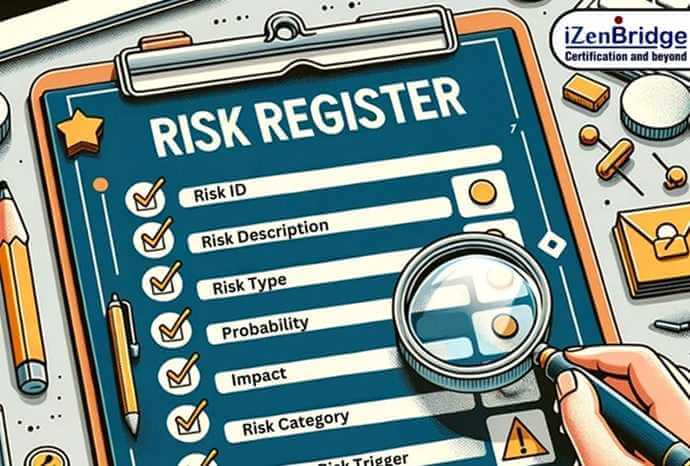

Risk, in the context of the PMP exam and project management, refers to an uncertain event or condition that, if it occurs, has a positive or negative effect on a project’s objectives. Risk is inherent in all projects, and effective risk management is critical to project success. It involves the process of identifying, analyzing, and responding to project risk, which includes maximizing the results of positive events and minimizing the consequences of adverse events.
The Risk Register is a pivotal tool in this process. It serves as a comprehensive repository where all identified risks are recorded and detailed, along with their respective management strategies. This dynamic document is used throughout the project lifecycle, evolving as new risks are identified, and existing risks are analyzed and responded to.
The Risk Register, although not always mandatory in every project, especially when adopting an adaptive approach where risks may be documented in the product backlog or other information radiators, is a vital tool in project management. This is particularly true for those studying for the Project Management Professional (PMP) exam. Gaining a clear understanding of its format and utility is crucial for effectively managing project risks and recognizing the value it can bring when appropriately utilized.
A Risk Register typically includes the following columns:
The Risk Register serves as a living document within project management that enables the team to:
For PMP candidates, understanding the format and utility of a Risk Register is essential. It’s not just about documenting risks; it’s about active risk management, which involves regular reviews, updates, and strategic responses. The insights from various professionals highlight the adaptability of the Risk Register to different project management environments and methodologies, emphasizing its significance in successful project delivery. If you’re gearing up for the PMP Exam, consider accelerating your journey by exploring our comprehensive PMP Certification program page.